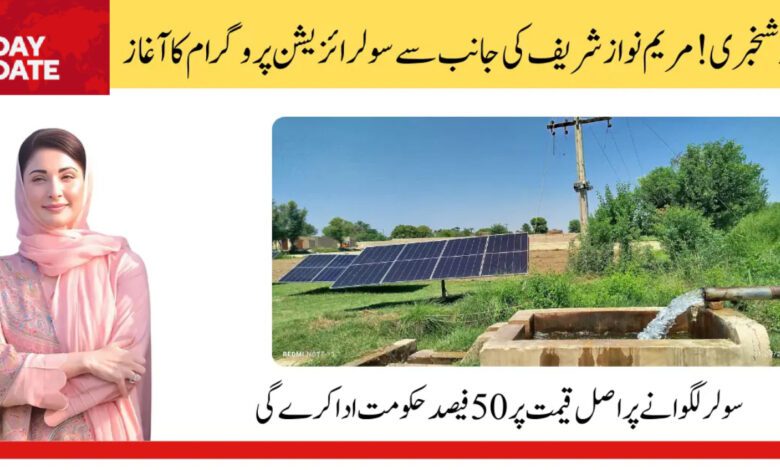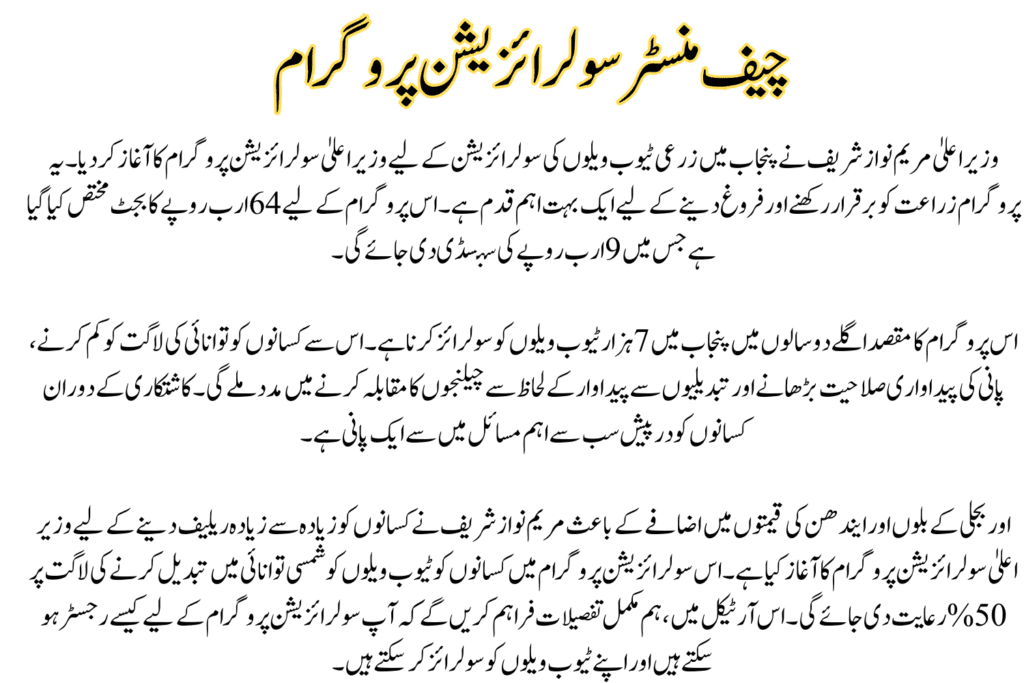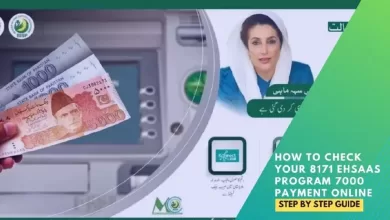Chief Minister Solarization Program For Agriculture Tub wells In Punjab

Chief Minister Solarization Program
Chief Minister Maryam Nawaz Sharif has lunched the Chief Minister Solarization Program aimed at converting agricultural tub wells in Punjab to solar power. This initiative is a significant move to advance and sustain agriculture in the region. A total budget of Rs. 64 billion has been allocated for this program, which includes a substantial subsidy of Rs. 9 billion.
The goal of this Chief Minister Solarization Program is to solarize 7,000 tub wells over the next two years. This transition is designed to help farmers cut energy costs, boost water efficiency, and address the challenges posed by production changes. Water scarcity and high electricity bills are major issues for farmers, and this program seeks to provide substantial relief.
Read Also: Today Update: CM Maryam Nawaz Sharif Livestock Card Apply Online

Objectives of the Chief Minister Solarization Program
The solarization program has several key objectives:
- Cost Reduction: By converting electric tubewells to solar energy, farmers will no longer face the high costs of electricity and fuel.
- Enhanced Water Accessibility: Solar-powered irrigation will make water more affordable and accessible, allowing farmers to better manage their crops.
- Increased Productivity: Timely irrigation facilitated by solar power will enhance crop yields.
- Environmental Impact: Solar energy reduces environmental pollution compared to traditional fuels, contributing to a cleaner and healthier environment.
Read Also: 1KV Solar Panel Through CM Punjab Maryam Nawaz Update
Eligibility Criteria for Farmers
To qualify for the Chief Minister Solarization Program, farmers must meet the following criteria:
- Residency: Applicants must be residents of Punjab and own agricultural land in the district where they apply.
- Tubewell Specifications: The tubewell must be electric or fuel-powered with a power requirement of up to 15 KW and installed on or before March 31, 2024. It should have a depth not exceeding 60 feet and a three-phase electrical connection.
- Financial Standing: Applicants must have settled their electricity bills and must not owe money to any agriculture department.
Read Also: BOP Solar Panels Registration Through BOP Shamsi Tawanai
How to Apply for the Chief Minister Solarization Program
Farmers can apply for the solarization program through the following process:
- Awareness Campaign: A large-scale campaign will be conducted to inform farmers about the benefits and application procedures of the solarization scheme.
- Application Form: The form will be available at the office of the Deputy Director of Agriculture Water Management.
- Submission of Documents: Applications, along with necessary documents such as a valid CNIC, proof of land ownership, the latest electricity bill, and a Kisan Card, must be submitted.
- Screening and Selection: Applications will be screened for eligibility, and successful applicants will be selected through a balloting process based on district quotas.
Read Also: Today News: 1kW Solar Panel Kit Scheme Approved by Maryam Nawaz
Benefits of the Solarization Program
The solarization of tubewells will offer significant benefits:
- Reduced Costs: Farmers will experience a considerable reduction in irrigation costs.
- Increased Efficiency: The program will enhance farm mechanization and efficiency.
- Higher Productivity: With reduced water and energy consumption, farmers can produce more crops, leading to increased income and agricultural productivity.
Read Also: Today Update: Free Solar Panel Scheme 2024 Registration, Eligibility Process
Conclusion
The Chief Minister Solarization Program is a valuable initiative for Punjab’s agricultural sector, offering long-term benefits. By converting to solar-powered irrigation, farmers will save money, improve crop yields, and help protect the environment. This program is a vital step toward modernizing agriculture and making it more sustainable for future generations.




